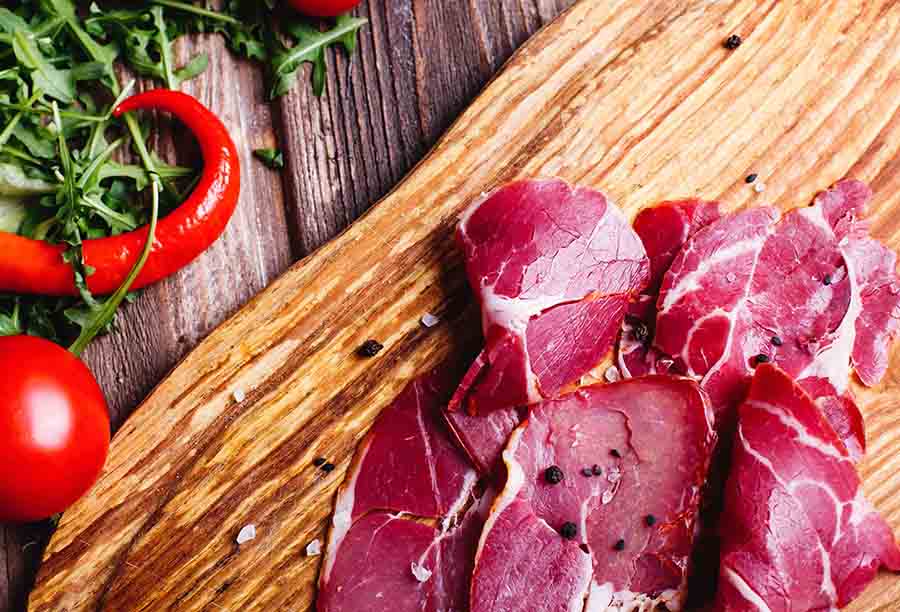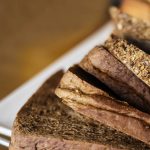Do you lack iron?
Certainly the intense and demanding rhythms of everyday life, combined with the race to meet our obligations, tire us, in fact, exhaust us. Perhaps, however, it is not the external factors that are responsible, but the ... internal ones, and one of them is the iron deficiency that occurs particularly in women. Proper nutrition, here too, plays a decisive role in preventing a lack of or replenishing this precious metal.
Anatomy of iron
Iron is one of the most valuable minerals, essential for the normal functioning of the body. Although it belongs to the category of metals, due to the small amount found in our body, it is characterized as a trace element, which nevertheless has the highest concentration in our body. Iron has two forms: heme and non-heme.
Haem iron has better absorption and is found exclusively in foods of animal origin, i.e. red meat, fish and poultry. In contrast, non-haem iron is found in legumes, nuts, fruits and vegetables, dairy products and eggs.
The valuable properties of iron.
Iron's ability to bind and detach with oxygen makes its functions in our body particularly important and vital:
- Iron is found in 70% of red blood cells, giving them their characteristic red colour and contributes to their formation, thus ensuring the necessary amount of blood needed by the body.
- It acts as a carrier of oxygen from the lungs to all parts of the body, literally from "top to bottom".
- About 5% is found in myoglobin, which is a compound responsible for the transport and storage of oxygen in the muscles and plays an important role when the muscles work harder and harder.
- It is also important for proper functioning and building a strong immune system.
- It is involved in the structure of many enzymes, which take part in the process of energy production.
- Iron has the ability to unlock energy from food, so it is one of the elements that contributes to the metabolism of carbohydrates, proteins and fats.
- Its adequate intake and quantity in our body also contributes to brain functions.

Which groups are at risk of missing out
- Women during pregnancy and breastfeeding
- Women during menstruation
- Vegetarians, who do not have balanced eating habits
- People who are volunteer blood donors
- Children, especially during the period of development
- People on 'starvation diets'
- People with gastrointestinal problems
What causes iron deficiency:
Iron deficiency in the body can affect vital functions, and the symptoms that manifest themselves greatly affect our daily lives. Let's see what can cause iron deficiency in the body:
- Iron deficiency anaemia
- Feeling tired, weak and pale skin
- Difficulty concentrating and reduced ability to think
- Immune system weakness
- Inability to control body temperature
- Brittle nails and hair loss
- Bad mood and stress
- Tachycardia and worsening of breathlessness in people with heart and respiratory failure
- Digestive disorders and problems in the gastrointestinal system
Which foods contain iron
It is very positive that iron is present as a nutrient in many foods even for vegetarians or vegans, groups that are often deficient in iron.
- Beef and liver
- Fish such as octopus, swordfish, tuna, salmon
- Chicken, the bite part
- Seafood such as clams, scallops, cuttlefish, oysters, mussels
- Eggs
- Cocoa powder
- Pulses, lentils, chickpeas, beans
- Vegetables such as artichokes, peppers, spinach, leeks, peas
- Nuts, cashews, peanuts, almonds, walnuts
- Whole grains and sesame seeds

The secret lies in absorption
One of the most common combinations is lentils and feta cheese, and yet the calcium in the cheese absorbs the iron and is not utilized by the body. Instead, there are combinations that promote the absorption of iron by the body. Let's look at ways in which we can reap the benefits of iron through diet.
- An acidic environment is required for the best absorption of iron and vitamin C is an ideal nutrient. Add peppers to rice, vinegar to lentils so that your body can absorb more iron, i.e. foods with fruits or vegetables rich in vitamin C.
- Also, foods containing iron can be combined with foods rich in B vitamins, such as asparagus, peas, sunflower seeds, green beans, trout, mushrooms, eggs, broccoli, almonds, almonds, oats, avocado, banana, salmon, sardines, spinach, lettuce, mango, orange, etc.
- If you need to eat more red meat, choose fat-free cuts such as pancakes, fillet or nua.
- Do not cook meat and fish at very high temperatures.
- Avoid combining iron-rich foods with dairy products, such as lentils and feta cheese, because calcium reduces absorption.
- Eat dairy products that are rich sources of calcium, as well as tea, coffee and large portions of vegetables and fruit, at least 1 to 2 hours before or after eating foods that are good sources of iron.
- Replenish your body's stores of iron by choosing dietary supplements containing ''gluconic'' forms of iron, which are recommended by health experts because they offer high absorption, while reducing the possibility of side effects such as diarrhea or, on the contrary, constipation and nausea.
- Organic bivalent iron is much better absorbed than inorganic and trivalent iron, while the presence of vitamins C and B12 is essential for its absorption.
Floradix is a specialized nutritional supplement with organic iron, vitamins C, B1, B1, B2, B6, B6, B12, extracts of tonic plants and concentrated fruit juices. Most importantly, Floradix is one of the most absorbable forms of iron, so it has no side effects. The secret to iron is bioavailability, i.e. whether our body absorbs the amount it needs to be healthy, full of vitality! The rich and specially studied composition of Floradix covers the nutritional needs in nutrients offering the body everything it needs and becomes our daily supply to have stamina and good mood. Floradix ensures the optimal utilization of iron, thus giving the body back all the lost energy and vitality it needs to respond to the intensive rhythms of everyday life. It does not contain sugar, preservatives, alcohol and chemical additives!





